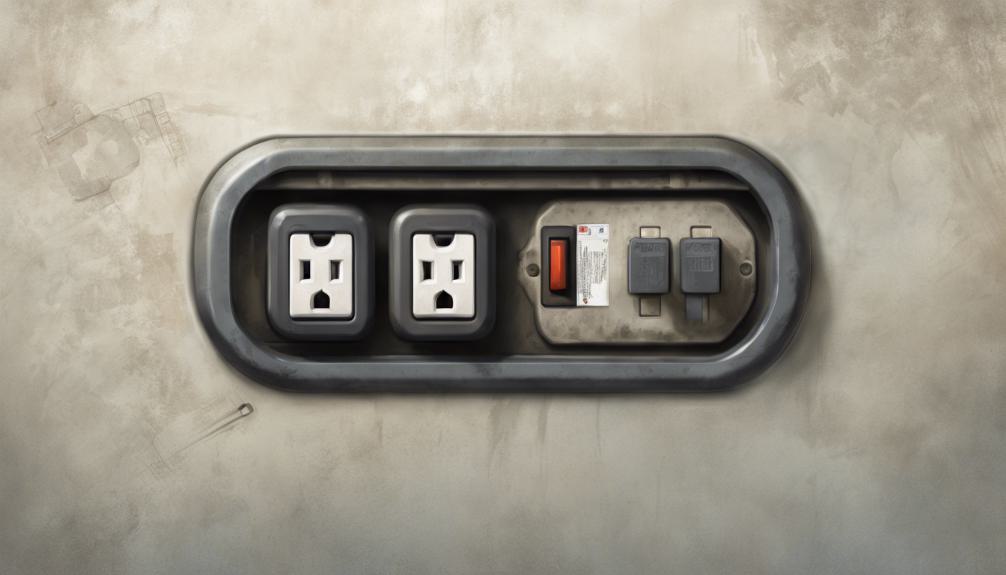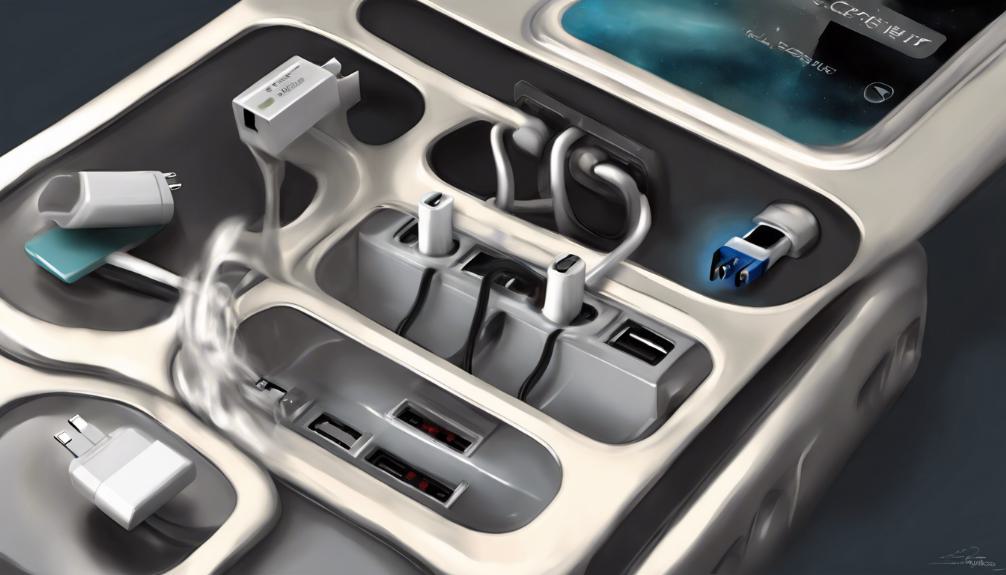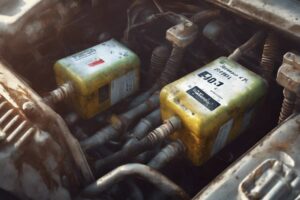When choosing vehicle power outlets, opt for the right type for efficient charging. Cigarette lighter sockets deliver 12V, auxiliary outlets cater to 6V and 12V systems. Newer versions skip heating elements but power devices effectively. Safety features like plastic caps and labels guarantee secure usage. Stay informed on connector compatibility for seamless power transfer. Standards such as SAE J563 and UL2089 guide your choice. Remember, adhering to these rules boosts efficiency. Go for the appropriate outlet type to match power needs and enjoy reliable charging. Understanding these basics sets you on the path to smarter choices for your devices.
Key Takeaways
- Different vehicle power outlets cater to specific voltage requirements.
- Understanding connector standards ensures seamless device charging.
- Safety features like overcurrent protection enhance device operation.
- Efficient charging practices prolong battery life and save energy.
- Selecting the right outlet type optimizes power transfer for devices.
Types of Vehicle Power Outlets

When exploring the types of vehicle power outlets, you'll encounter various options designed to accommodate different voltage systems and charging needs. Power outlet compatibility is vital in ensuring your devices receive the necessary power without damage.
Vehicle charging options vary from traditional cigarette lighter sockets to auxiliary power outlets, each serving specific purposes. Cigarette lighter sockets are commonly found in vehicles and provide 12V DC power, suitable for charging electronics and other devices. On the other hand, auxiliary power outlets come in different sizes and are designed for both 6-volt and 12-volt systems in vehicles, offering flexibility in charging options.
Understanding the distinctions between these outlets is essential for efficiently powering your devices while on the go. Some newer vehicles feature sockets without heating elements, still serving as power sources for various devices. These outlets often come equipped with plastic caps and labels for convenience and safety when powering portable electronics, enhancing the overall user experience.
Familiarizing yourself with the various types of vehicle power outlets can help you make informed decisions when charging your devices while driving.
Understanding Connector Compatibility
To guarantee seamless compatibility with auxiliary power outlets, understanding the various vehicle power outlet connectors like SAE J563 and UL2089 is crucial. These connector standards ensure that your devices can efficiently draw power from your vehicle's outlets.
Different receptacles and plugs come in 6-volt and 12-volt sizes to cater to American and European automobile electrical systems. By adhering to these standards, you can rest assured that your devices will connect without any issues, providing you with the power you need on the go.
Ensuring compatibility through these connector standards not only facilitates a smooth power transfer but also enhances power efficiency, allowing your devices to operate optimally. Understanding the nuances of these connector standards will enable you to make informed choices when selecting compatible accessories for your vehicle's power outlets.
Safety Features in Power Outlets

Safety features integrated into vehicle power outlets play an essential role in ensuring secure operation of connected devices. These features include overcurrent protection, ground fault protection, and temperature monitoring. They are designed to prevent electrical hazards and protect devices from potential damage.
Overcurrent protection safeguards against excessive current flow that can lead to overheating and device malfunction. Ground fault protection is vital in averting electric shocks by cutting off power swiftly if a fault is detected in the circuit.
Temperature monitoring is equally significant, helping prevent overheating and ensuring that power delivery remains safe and reliable.
Efficient Charging Practices
Optimizing your device's charging efficiency entails utilizing the correct voltage and current settings to prevent damage and enhance battery longevity. When charging your devices, it's crucial to follow some charging tips to guarantee efficient power consumption and battery maintenance.
Avoid overcharging your devices, as this can lead to decreased battery life and unnecessary energy consumption. Unplugging your devices when not in use not only prevents energy wastage but also aids in reducing electricity bills.
To further enhance efficiency, consider utilizing energy-saving settings on both your devices and chargers. These settings can assist in optimizing power consumption, contributing to a more sustainable charging process. Moreover, using power outlets equipped with surge protection features can safeguard your devices from voltage spikes and electrical surges, extending the lifespan of your electronics.
Benefits of Different Outlet Types

When selecting the appropriate outlet type for your charging needs, consider the benefits offered by different options like NEMA 5-15, NEMA 14-30, and NEMA 6-50 to guarantee efficient and safe power delivery.
NEMA 5-15 outlets, commonly found in households, provide a standard 120 volts, ideal for low-power devices such as phones and laptops.
If you're looking to charge high-power devices like electric cars swiftly, NEMA 14-30 outlets, offering 240 volts, ensure faster charging rates.
On the other hand, NEMA 6-50 outlets are tailored for heavy-duty applications, supplying 240 volts for machinery and appliances requiring higher power levels.
Choosing the right outlet type is essential for efficient and safe charging of electric vehicles based on their power requirements and compatibility. Understanding the advantages and applications of each outlet type can help you make an informed decision that aligns with your charging needs, ensuring peak performance and safety.
As an Amazon Associate we earn from qualifying purchases.










